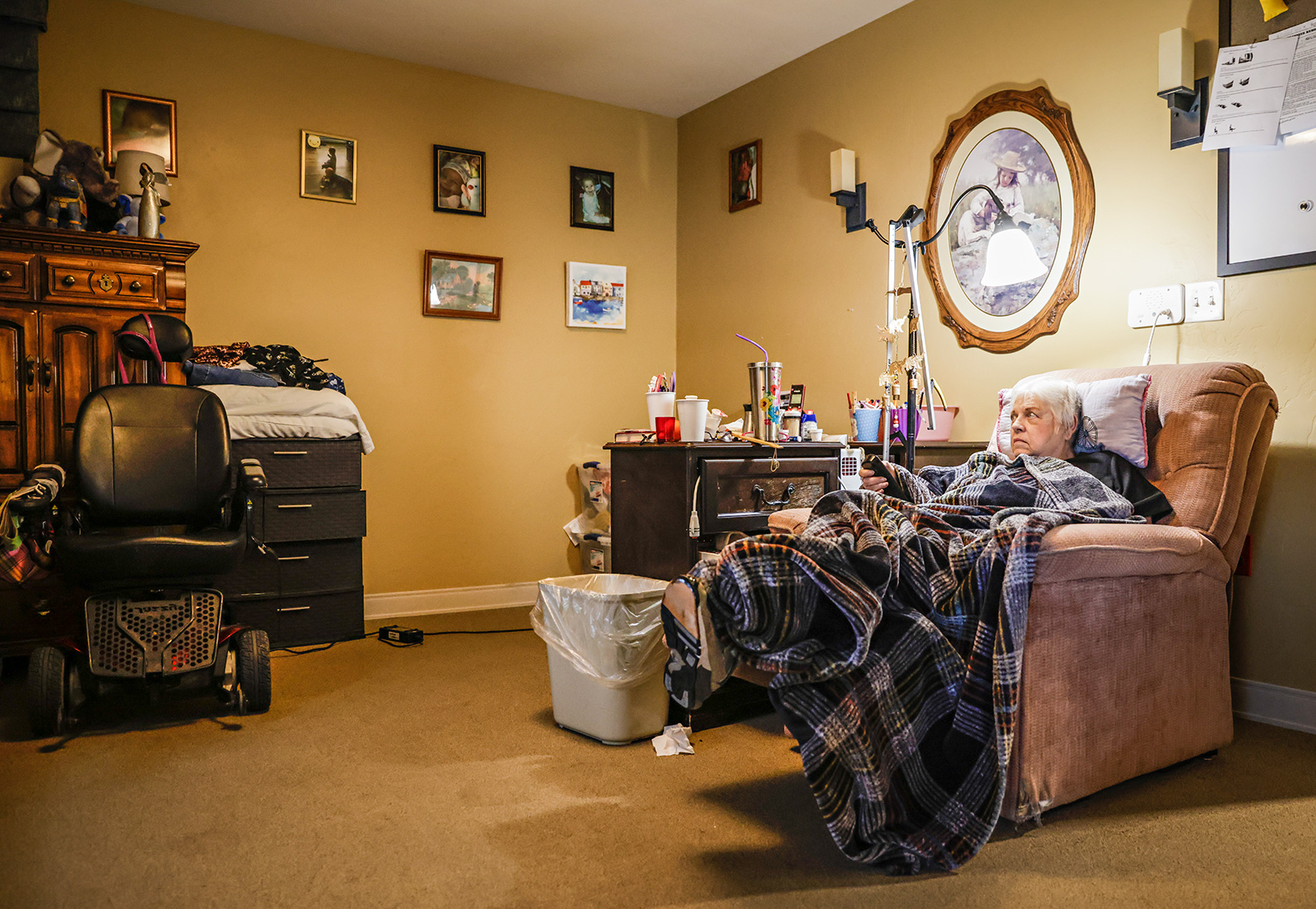‘We Are Losing Money Every Month’
Nursing home facilities are struggling to keep doors open with a low Medicaid reimbursement rate, high operational costs and a lack of staff – which led to 10 closures in Montana last year
By Maggie Dresser
At Immanuel Lutheran Communities in Kalispell, the long-term care facility is one of two “life plan” communities in the state, offering independent living, assisted living, memory, post-acute and long-term care for seniors. About 60% of the roughly 300 residents in the facility are Montana Medicaid recipients while the remainder are on Medicare or pay through a private insurer.
According to Immanuel Lutheran Communities CEO Jason Cronk, it costs the nonprofit organization $350 per day to operate, but the state reimbursement rate is only $212 per day. The current rate increased only $1 from $211 in fiscal year 2021, the same year that wages increased by 20% and inflation spiked operating costs.
“We’re facing high expenses and our Medicaid reimbursement rate remains unchanged,” Cronk said. “We saw no relief from our state government on Medicaid.”
Following nationwide trends, the nonprofit has faced a staffing shortage and has struggled to hire registered nurses, leading to an increase in wages while relying on travel nurses who are paid significantly more for 60-day contracts. Cronk currently has 16 travel nurses on contract, and he can’t afford to hire any more, despite the facility’s need.
In the nursing home portion of Immanuel Lutheran, Cronk can serve 123 residents, but there’s only enough staff for 90. Meanwhile, there are 62 people on a waitlist.
“The need is there,” Cronk said. “If I had the money, I could hire more staff and I could meet our full potential. There are also people in the hospital that need to be discharged and are not being discharged, so they are staying in the hospital longer – which is more expensive. That’s why we have nursing homes.”
Last year, the Department of Health and Human Services (DPHHS) released a rate study conducted by Guidehouse Inc. to analyze the operational costs of nursing homes in the state and an appropriate Medicaid reimbursement rate.
Using cost, occupancy, utilization and wage data, analysts recommended the state should set the Medicaid reimbursement rate at $278 for fiscal year 2024. DPHHS is instead proposing that the reimbursement rate be raised to $249 per day, Cronk said.
“It’s below what their own department’s independent group recommended,” Cronk said. “It’s a head-scratcher.”
For nursing facilities, the governor’s budget would adjust rates to cover 89% of the benchmark recommended in the study in the first year of the biennium, DPHHS spokesperson Jon Ebelt in an email, followed by 84% in the second year of the biennium.
“These are historic rate adjustments being proposed by Governor Gianforte during a period of great volatility in the Medicaid utilization and forecasting,” Ebelt wrote.
But nursing home operators say it’s not enough.
Rose Hughes, the executive director for the Montana Health Care Association in Helena, says the actual cost of operation ranges from $300 to $325 per day and facilities are suffering losses.
“We are losing money every month,” Hughes said. “It’s not sustainable. When is it going to get fixed? The response is there’s no money … now we have the results of the study, and they are still not willing to pay even what the study says.”
Historically, Hughes says Medicaid reimbursements have never contributed much, but nursing home facilities were able to make up for the lack in state funding with private payers and Medicare.
“They could create a mix of revenue that worked, but that’s because the gap wasn’t as large,” Hughes said. “You can’t charge private payers enough to make up for Medicaid.”
In 2022, 10 nursing homes closed in the state, including Lake View Care Center in Bigfork. Due to the closures, 289 elderly and disabled nursing home residents were transferred to other facilities or transitioned into different types of services like in-home care or assisted living, according to Ebelt.
This legislative session, Hughes is asking lawmakers to appropriate sufficient funds to pay the cost of nursing home care, which is likely much greater than the study’s recommendation. Since most nursing homes can’t keep a full occupancy due to staffing, Hughes says the study did not adjust for the cost of empty beds.
“The occupancy is quite the red herring of all that’s going on,” Hughes said. “Even if they were to pay what the study pays, we don’t think they will be close to the costs.”
Nursing home operators are also asking for systemic improvements and legislation is being drafted to require regular inflationary adjustments to the Medicaid rate.
Additionally, Hughes is also asking for separate legislation to appropriate short-term funding to keep nursing homes afloat until the next fiscal year.
At Immanuel Lutheran Communities, Cronk hopes the state will at least raise the reimbursement rate to the recommended amount of $278.
“We’ve seen extraordinary costs,” Cronk said. “We need to see some extraordinary adjustment to the Medicaid rate.”